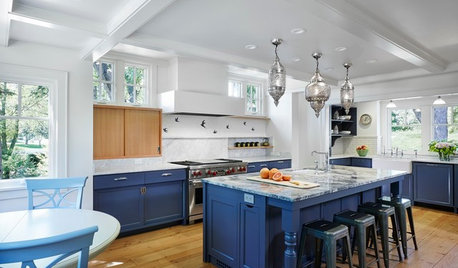I need help with my soil test results, please.
edweather USDA 9a, HZ 9, Sunset 28
12 years ago
Related Stories

GARDENING GUIDESHow to Stop Worrying and Start Loving Clay Soil
Clay has many more benefits than you might imagine
Full Story
GARDENING GUIDESHave Acidic Soil in Your Yard? Learn to Love Gardening Anyway
Look to acid-loving plants, like conifers and rhododendrons, to help your low-pH garden thrive
Full Story
COLORSpeed-Dial Color Selection to Get the Best Result
You’ve belabored your color decisions and are still stuck. Here is how to evaluate your space and make choices that are right for you
Full Story
GARDENING GUIDESThe Poop Scoop: Enrich Your Soil With Good Old Manure
Get over the ick factor already — this natural super-ingredient for soil has so many benefits, you'll wonder why you ever went chemical
Full Story
GARDENING GUIDESGardening Solutions for Heavy Clay Soils
What’s a gardener to do with soil that’s easily compacted and has poor drainage? Find out here
Full Story
GARDENING GUIDESGrow a Beautiful Garden in Alkaline Soil
Got alkaline soil? Learn how to manage it and the many beautiful plants that will thrive in this ‘sweet’ soil
Full Story
GARDENING GUIDESGardening Solutions for Dry, Sandy Soils
Has your desert or beachy site withered your gardening creativity? Try these ideas for a beautiful, easy-care landscape
Full Story
FARM YOUR YARDHow to Get Good Soil for Your Edible Garden
The nutrients in your soil feed the plants that feed you. Here are tips on getting it right — just in time for planting season
Full Story
RANCH HOMESHouzz Tour: Ranch House Changes Yield Big Results
An architect helps homeowners add features, including a new kitchen, that make their Minnesota home feel just right
Full Story
REMODELING GUIDESHouzz Survey Results: Remodeling Likely to Trump Selling in 2014
Most homeowners say they’re staying put for now, and investing in features to help them live better and love their homes more
Full Story

rhodyman
edweather USDA 9a, HZ 9, Sunset 28Original Author
Related Professionals
Accokeek Landscape Architects & Landscape Designers · Parole Landscape Architects & Landscape Designers · Elgin Landscape Contractors · Williamsburg Landscape Contractors · Eagle Landscape Contractors · Galveston Landscape Contractors · Lady Lake Landscape Contractors · Lantana Landscape Contractors · Methuen Landscape Contractors · Milton Landscape Contractors · Overland Park Landscape Contractors · Plymouth Landscape Contractors · Vineyard Landscape Contractors · Westford Landscape Contractors · Casselberry Landscape Contractorsrhodyman
edweather USDA 9a, HZ 9, Sunset 28Original Author